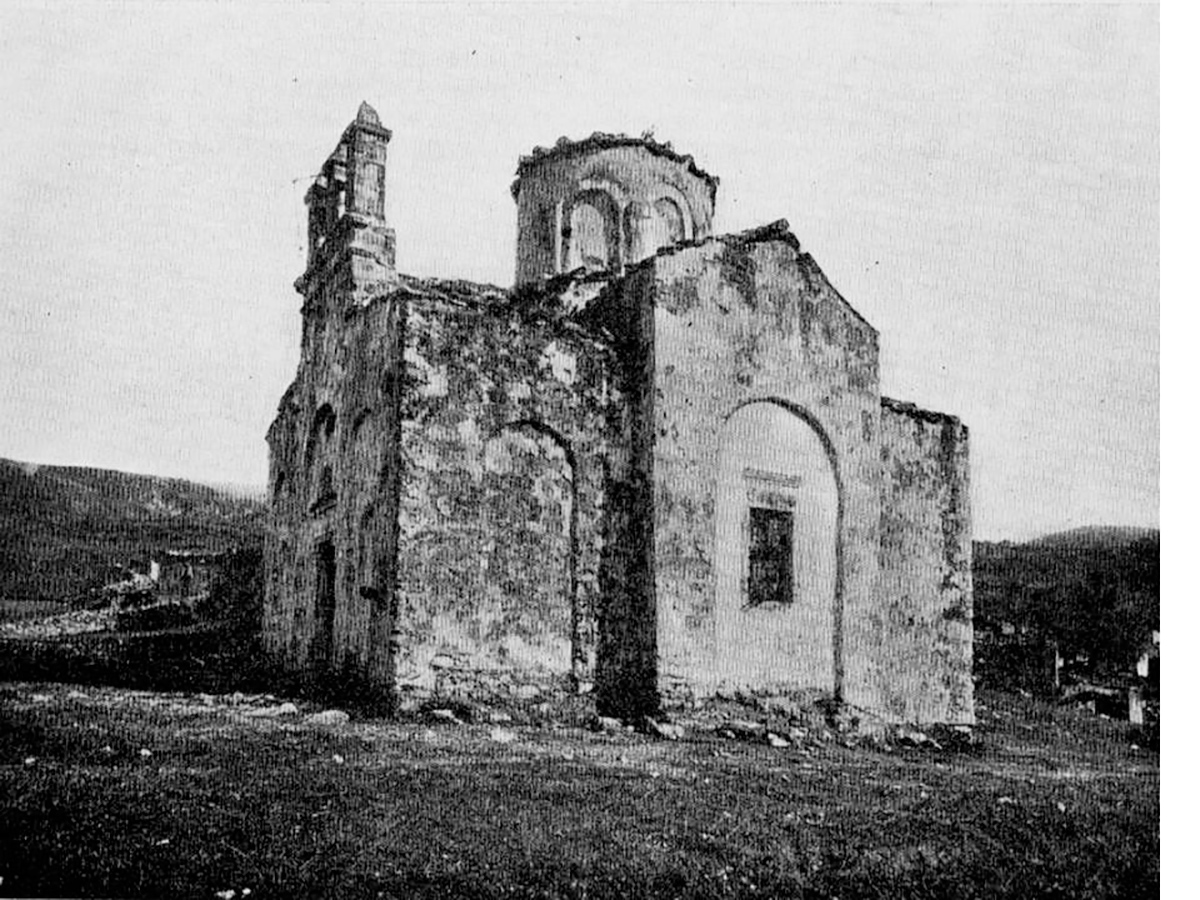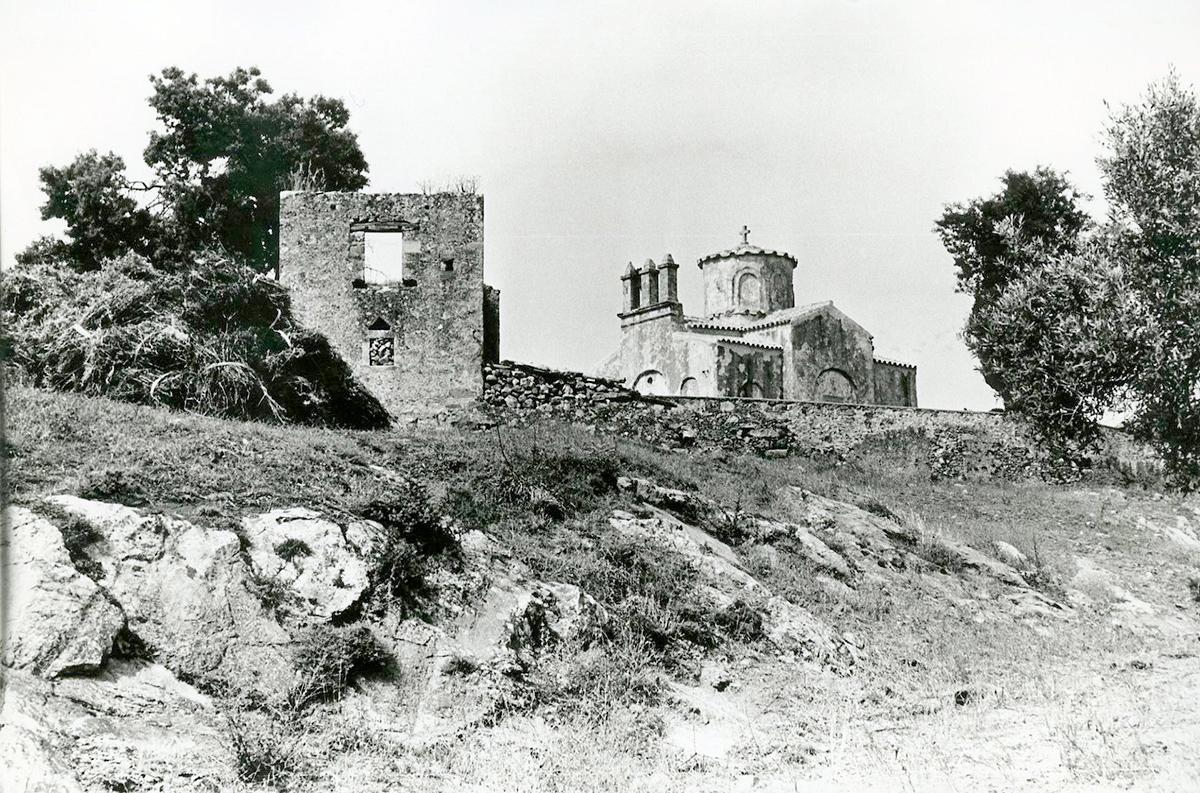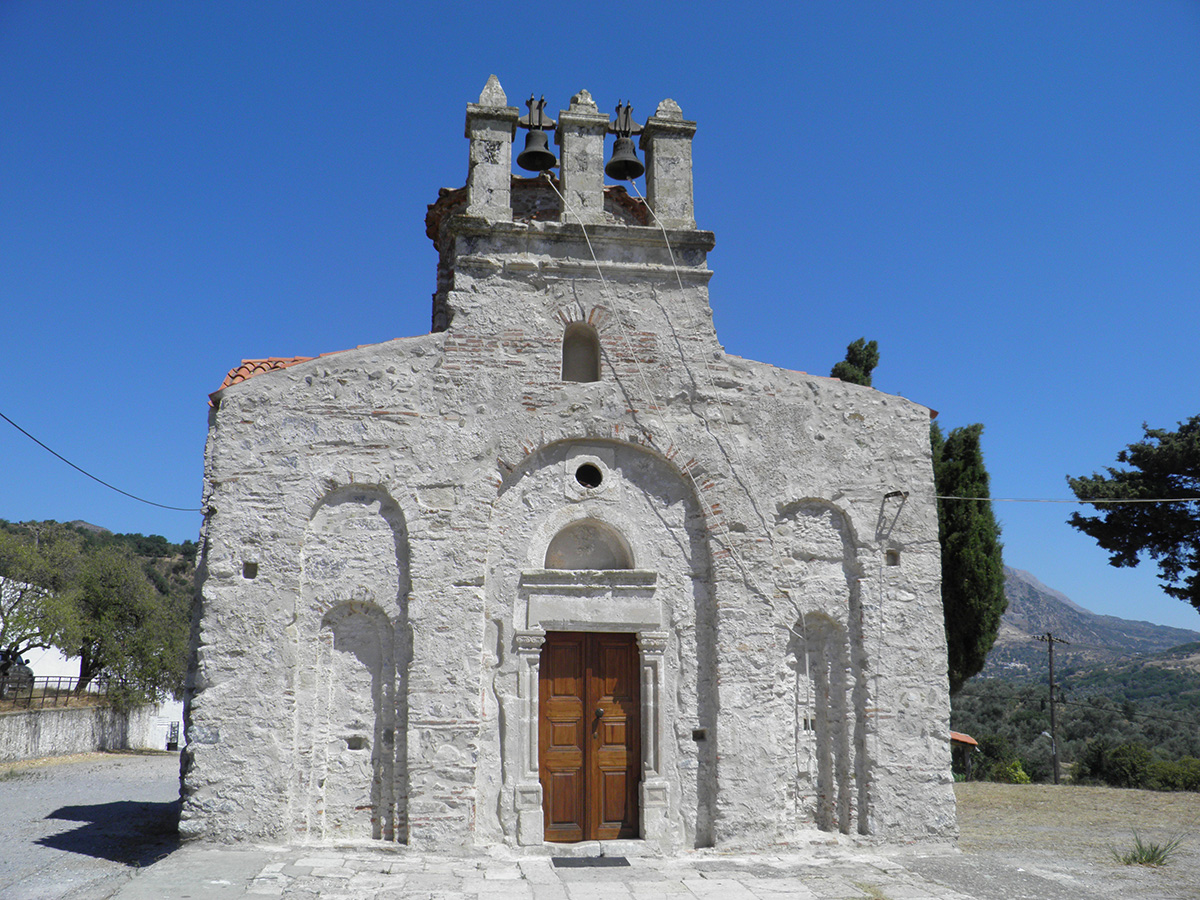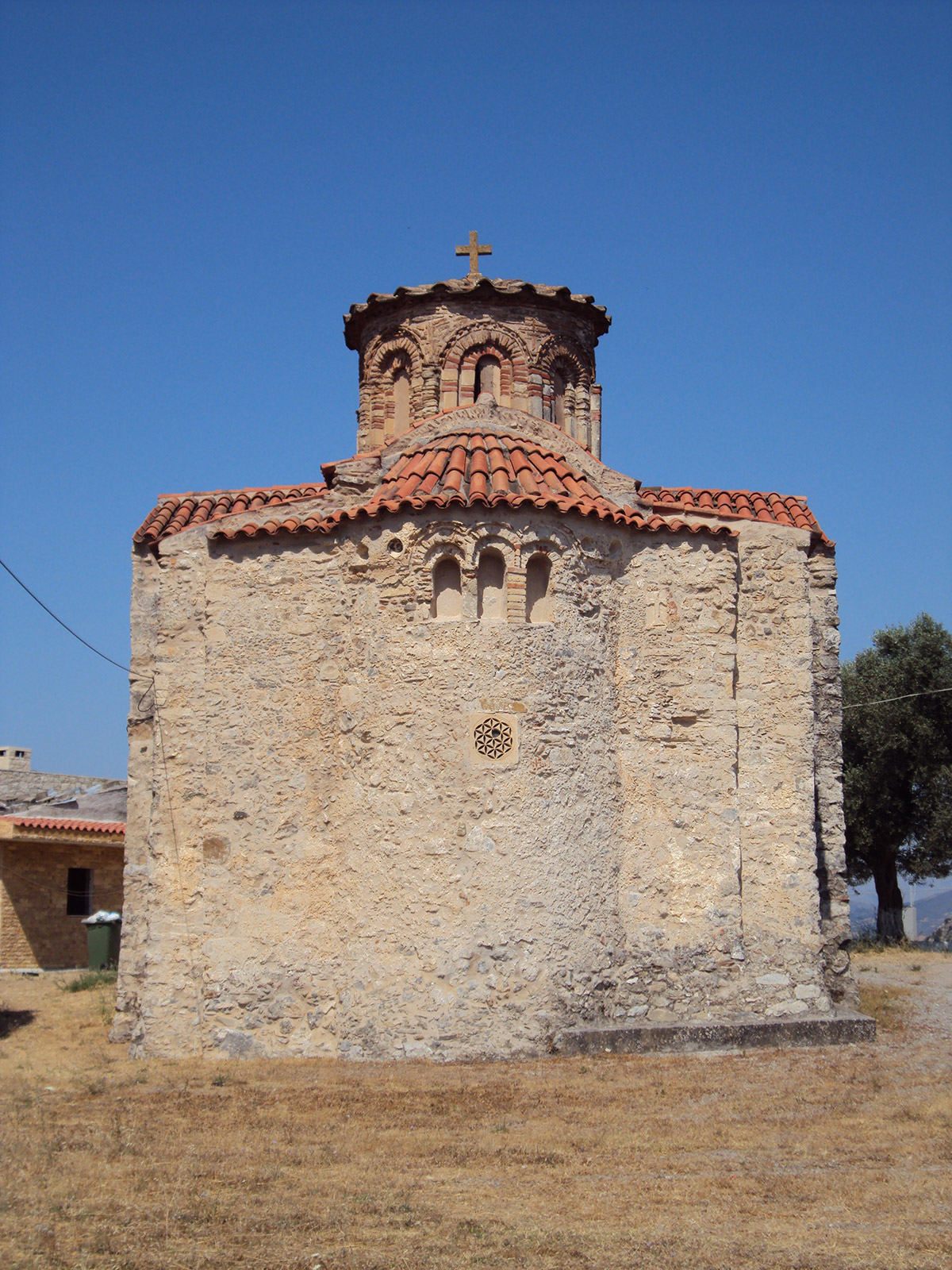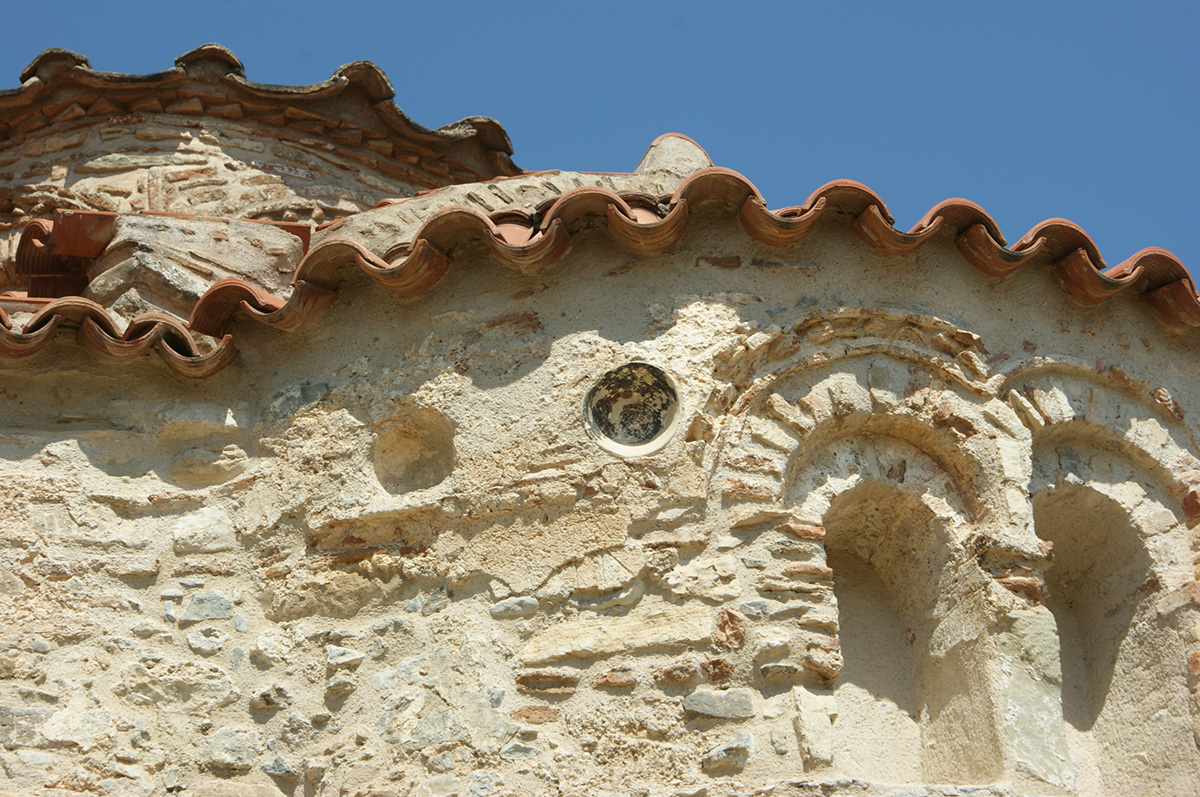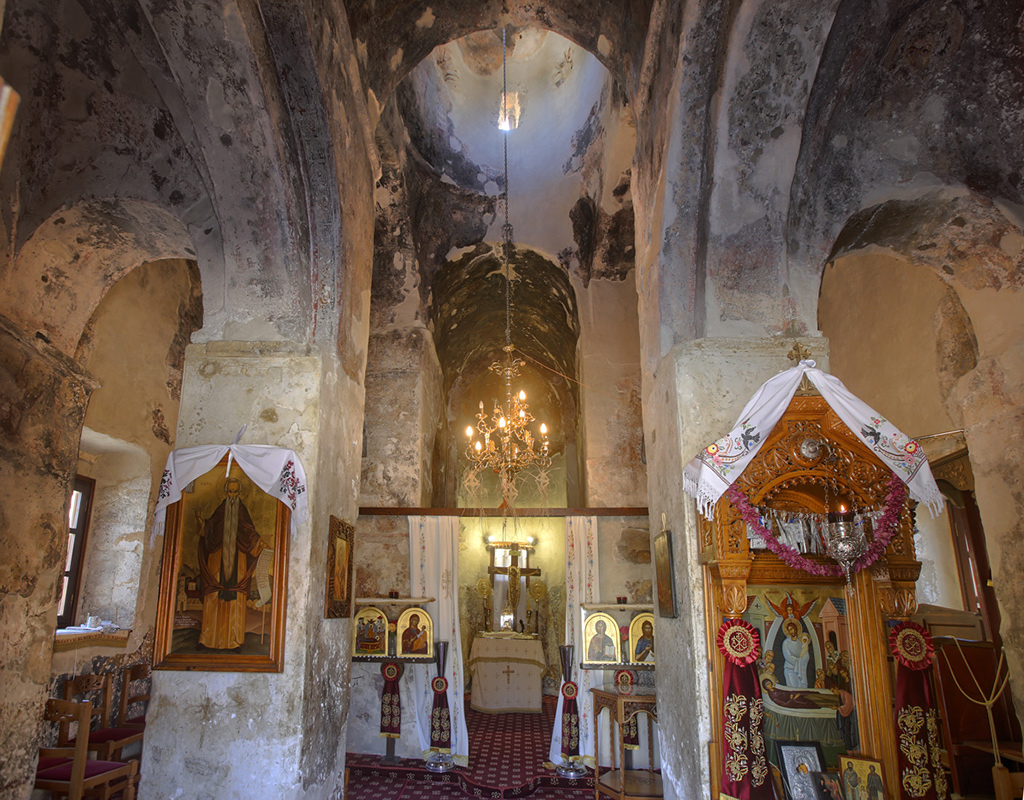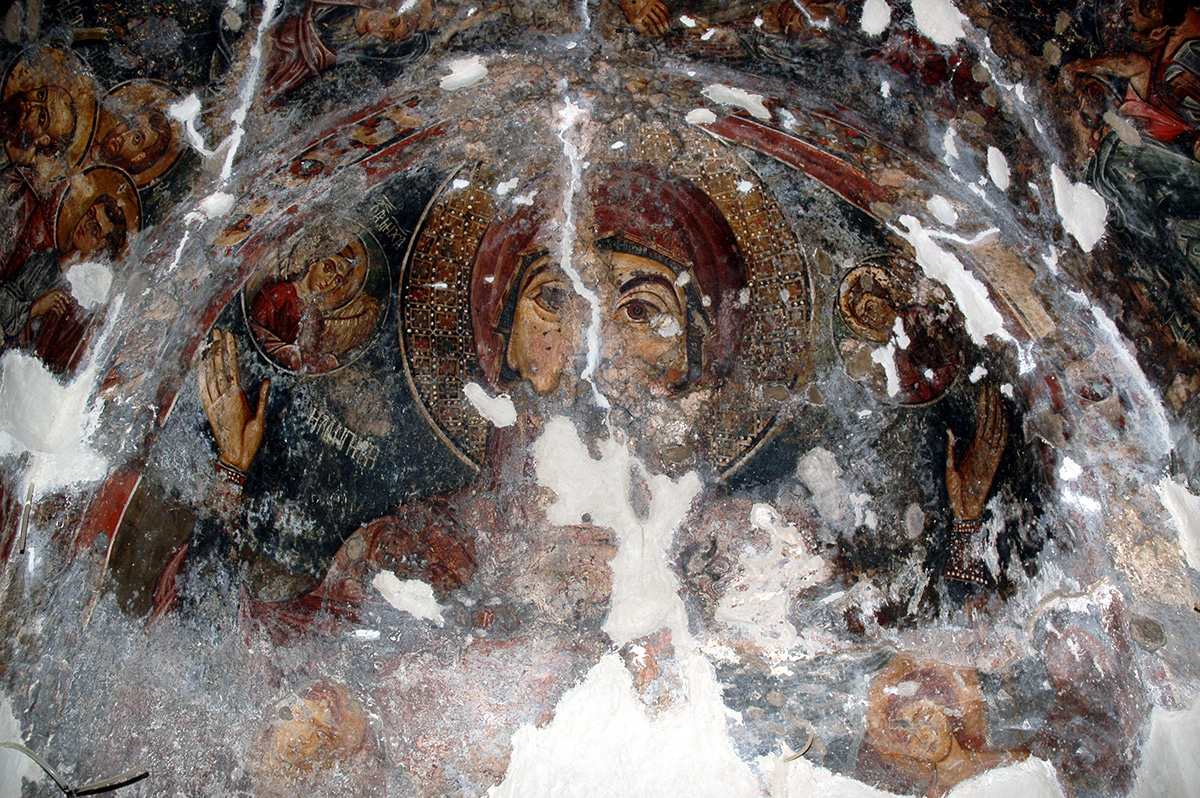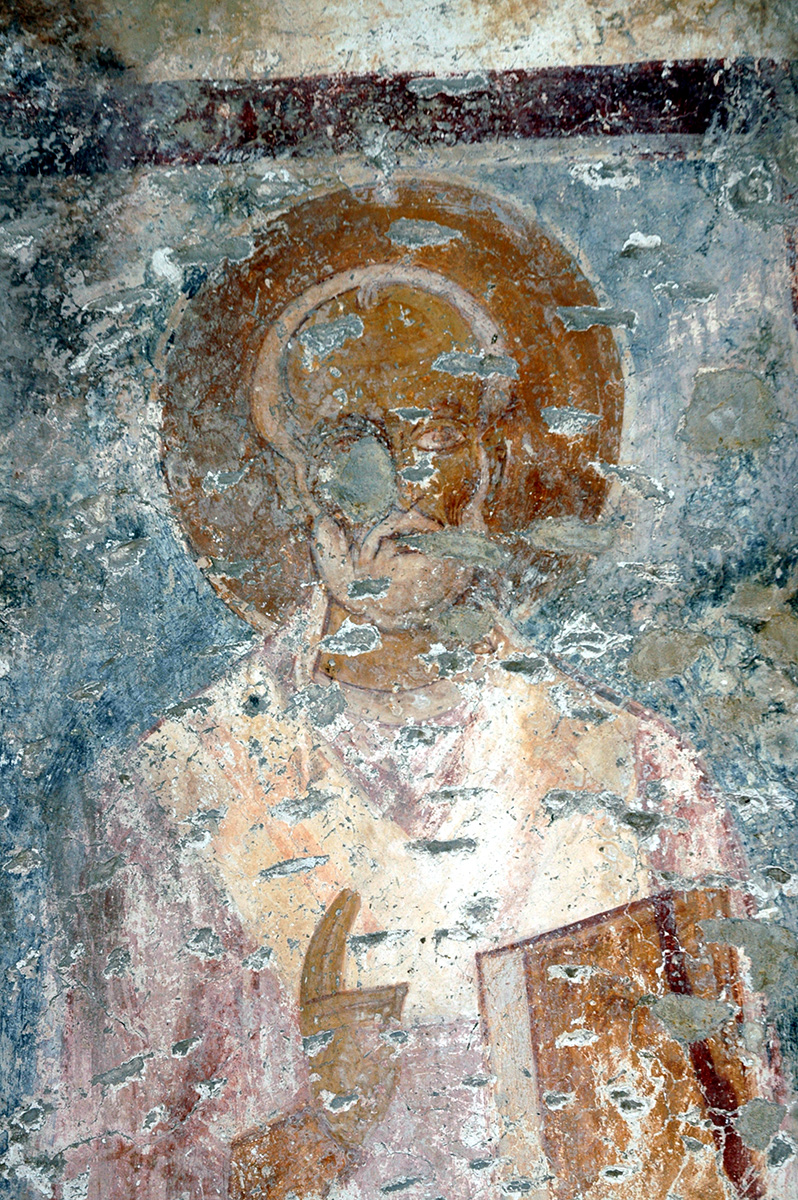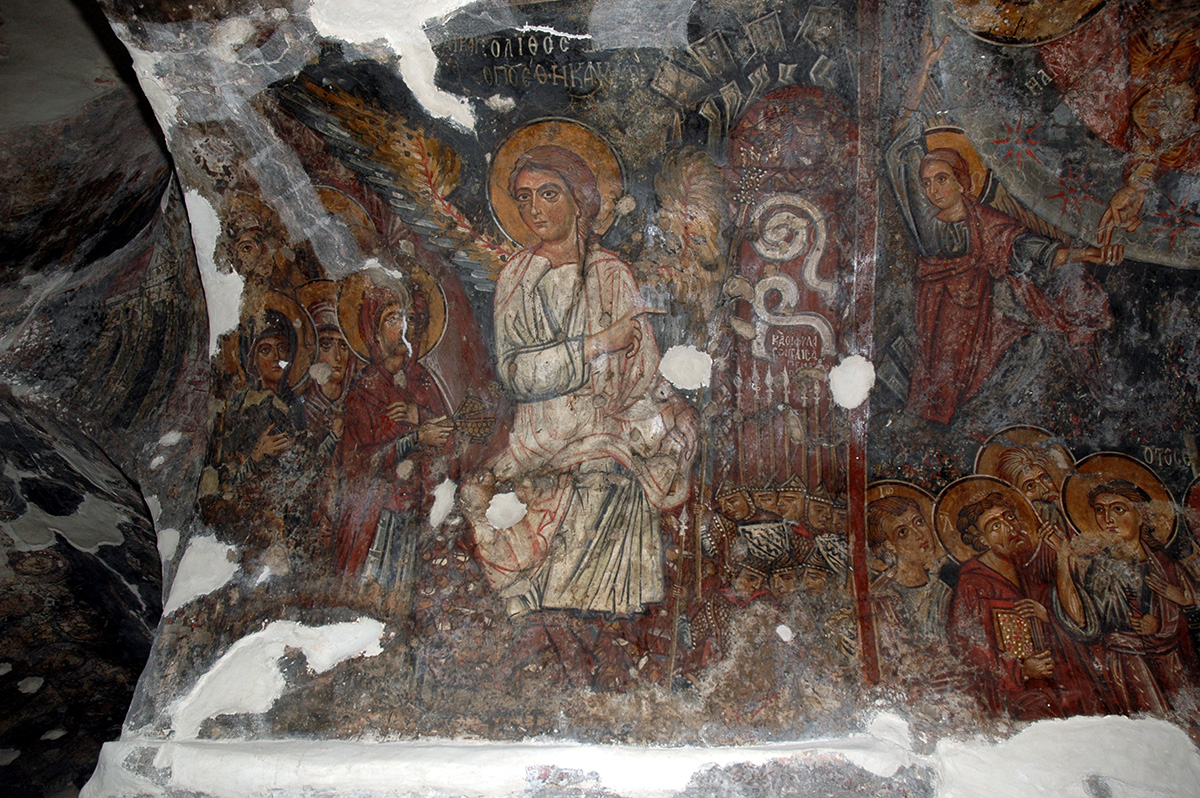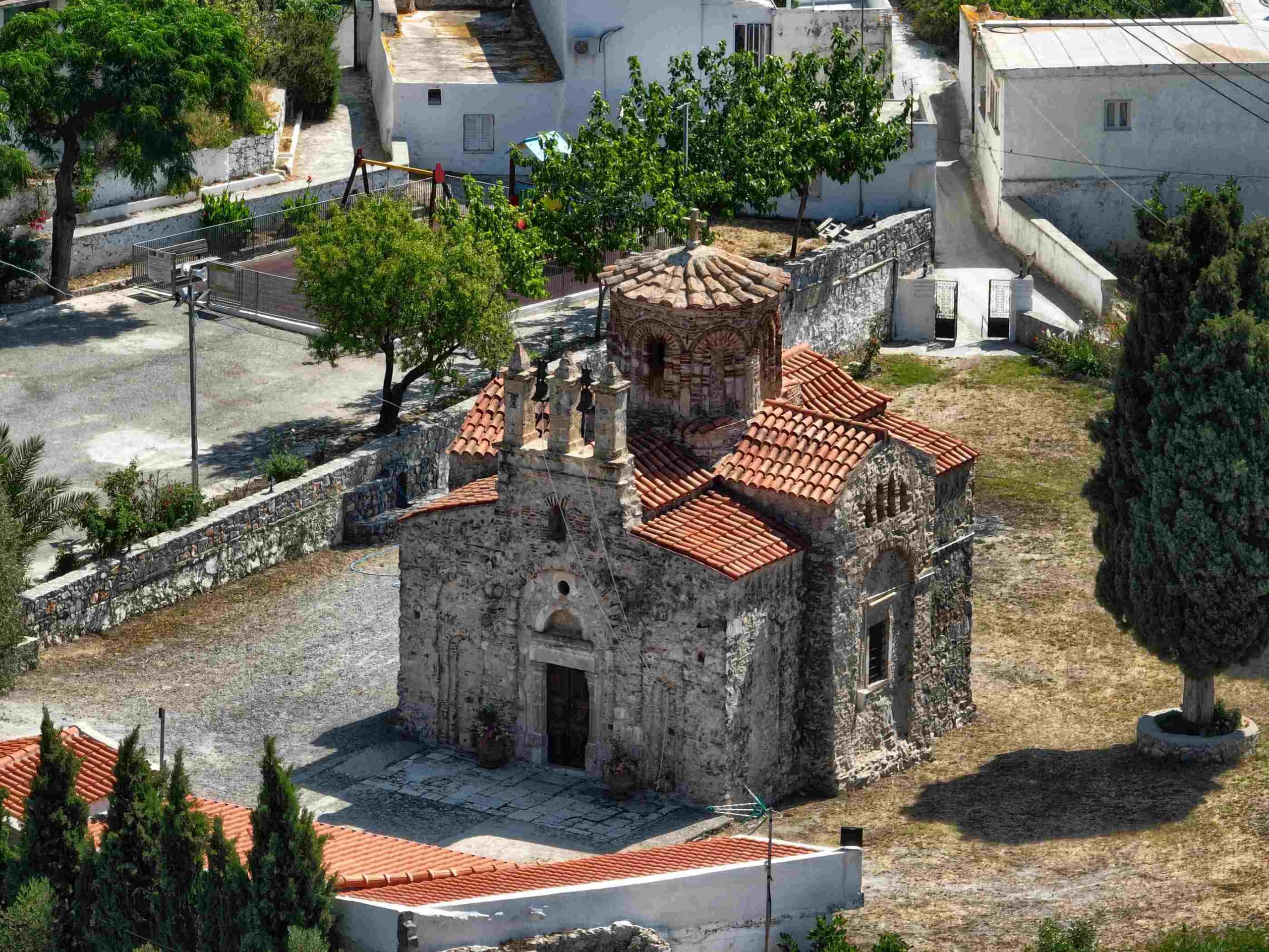
Church of Panagia (Virgin Mary) in Lampini.
Lampini, church of Panagia (Virgin Mary) Lampini
Panagia Lampini is a 12th-century cross-in-square church.
Four layers of frescoes are preserved in the interior of the building. The first layer, mainly found in the apse, dates to the end of the 12th century. It has been partially damaged by hammer blows, for the better binding of the next layer. The second layer, from the middle of the 13th century, is located on the western side of the church. The third layer dates back to the early 14th century and includes representations of the Virgin Mary, the Christological cycle, the Last Judgment, and the funerary portrait of Ioannis Kapsodasis. The portrait is accompanied by an inscription dated in 1301. The final layer mainly consists of representations from the Mariological cycle and dates back to the first half of the 15th century.
Bibliography
Μ. Ανδριανάκης, Κ. Γιαπιτσόγλου, Χριστιανικά μνημεία της Κρήτης, Ηράκλειο 2012, σ. 319-321
I. Spatharakis, Byzantine wall paintings of Crete, vol IV. Agios Basileios Province, Leiden 2015, 111-128.
Funerary portrait of Ioannis Kapsodasis
The funerary portrait of Ioannis Kapsodasis is depicted on the southern cross arm of the church.
The young man is beardless, wearing a white vestment and holding a book. On either side of the figure is the inscription, which mentions the date of his death on September 22 of the year 6800 from the creation of the world, i.e. 1301.
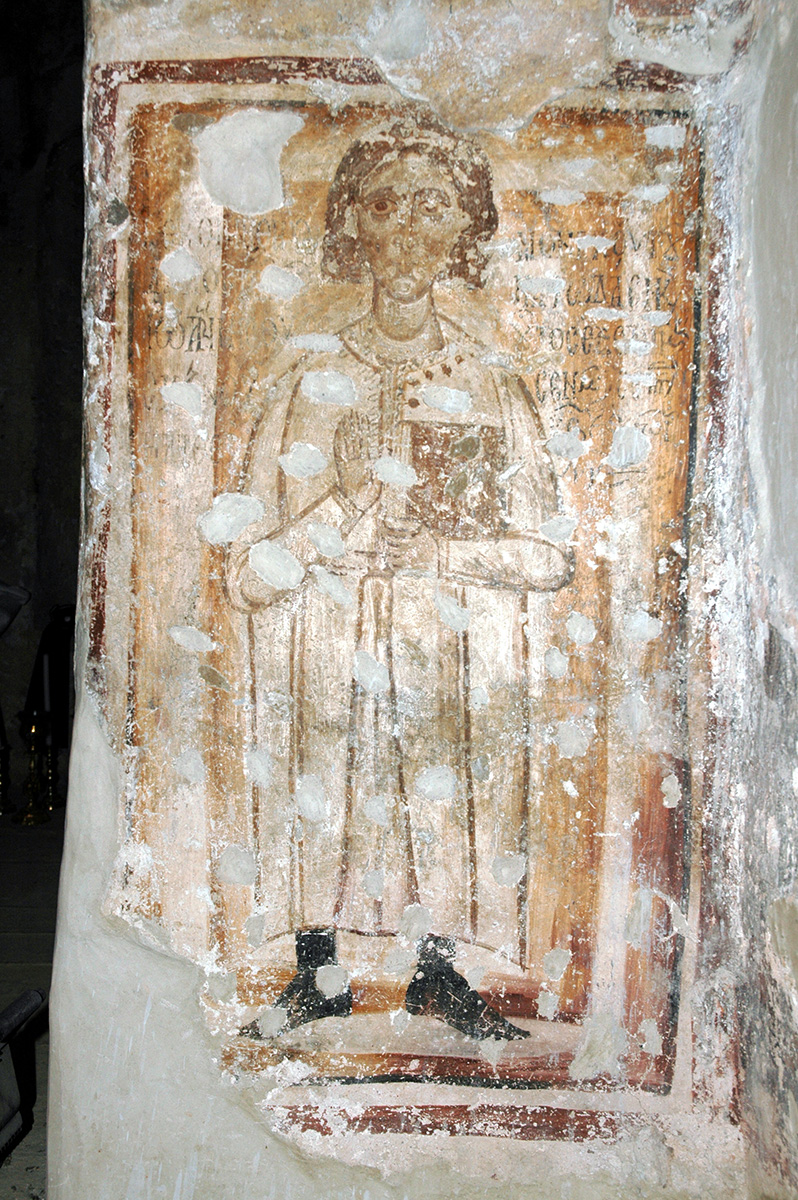
Funerary portrait of Ioannis Kapsodasis (1301).
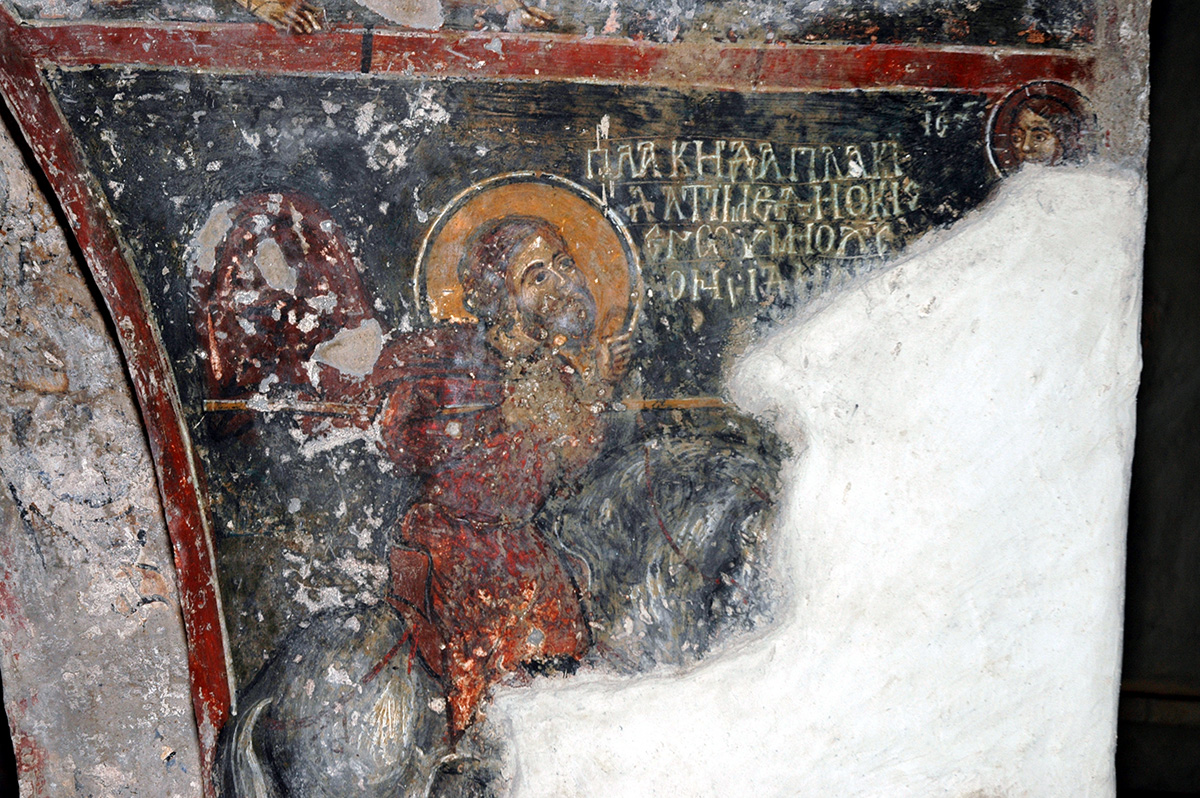
The Vision of Saint Eustathios Placidas.
Representation of Saint Eustathios Placidas
The rare representation of Placidas, a high-ranking officer during Emperor Trajan's reign, who converted to Christianity after Christ appeared to him in a vision during a hunt, is depicted in the church's western cross arm.
The representation shows the saint on horseback, galloping to the right while holding a lance, with the figure of Christ emerging from the upper right corner. The inscription contains the phrase that Christ addressed to the hunter: “Placidas, Placidas, why do you pursue me? I am Christ, whom you pursue”.
Photo Gallery
- The church at the beginning of the 20th century. Photo by G. Gerola.
- The church. Photographic archive of the Ephorate of Antiquities of Rethymno.
- The western side of the church.
- The eastern side. Photographic archive of the Ephorate of Antiquities of Rethymno.
- Immured vessels (bacini) in the apse of the church.
- The interior of the church.
- Panagia (Virgin Mary) “Lampini” in the apse of the church
- Saint Nicholas from the earlier fresco layer.
- The Empty Sepulchre.

